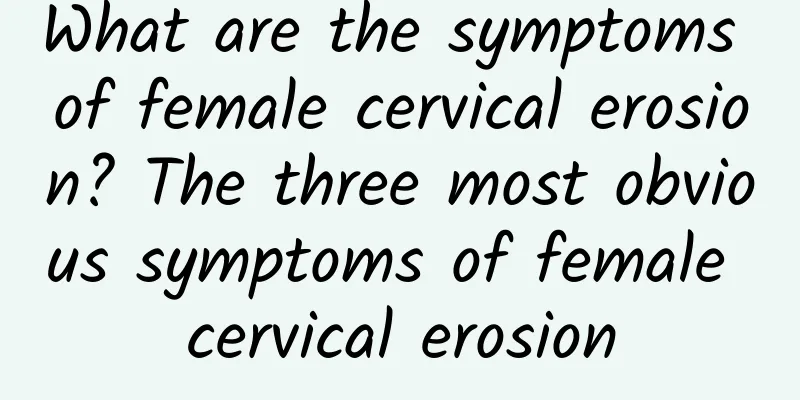What causes cervical erosion?

|
Cervical erosion is mainly caused by physiological changes or inflammatory stimulation of cervical epithelial cells. It is not a true "erosion" but a common gynecological phenomenon. Its causes include changes in hormone levels, chronic inflammation, infection, etc. The treatment method should be selected according to the specific cause, including drugs, physical therapy or surgical intervention. 1. Changes in hormone levels: When women are in puberty, pregnancy, or use oral contraceptives, their estrogen levels increase, which may cause the cervical columnar epithelium to migrate outward, forming an appearance of "erosion". This situation usually does not require special treatment, and regular check-ups are sufficient. If accompanied by discomfort, you may consider using estrogen regulating drugs such as estradiol valerate tablets, ethinyl estradiol cyproterone acetate tablets, etc. 2. Chronic inflammation: Long-term chronic cervicitis is one of the common causes of cervical erosion. Inflammatory stimulation causes damage to cervical epithelial cells, which manifests as erosion-like changes. Anti-infection treatment is required for inflammation. Commonly used drugs include metronidazole, clindamycin, etc. At the same time, local anti-inflammatory drugs such as compound phellodendron liquid coating and Baofukang suppository can be used in combination. 3. Infection: Human papillomavirus (HPV) infection, mycoplasma or chlamydia infection, etc. may also cause cervical erosion. For HPV infection, interferon gel, Baofukang suppository and other drugs can be used for local treatment. For mycoplasma or chlamydia infection, antibiotics such as azithromycin and doxycycline are required for systemic treatment. 4. Physical therapy: For cervical erosion with obvious symptoms or recurring, physical therapy can be considered. Common methods include laser therapy, cryotherapy and electrocautery. Laser therapy destroys the diseased tissue through high-energy beams, cryotherapy uses low temperatures to cause necrosis of diseased cells, and electrocautery burns the diseased area through electric current. These methods must be performed under the guidance of professional doctors. 5. Surgical treatment: Severe cervical erosion or suspected cancer may require surgical treatment. Common surgical methods include cervical conization, loop electrosurgical excision procedure (LEEP), etc. Cervical conization removes part of the cervical tissue for pathological examination, while LEEP uses a high-frequency electric knife to remove the diseased tissue. The operation must be performed by a professional doctor in a regular hospital. The treatment of cervical erosion needs to be based on the specific cause and condition. It is recommended to be carried out under the guidance of a doctor. At the same time, maintaining good living habits, avoiding unclean sexual behavior, and regular gynecological examinations can help prevent and detect cervical lesions at an early stage. |
<<: What are the symptoms of ectopic pregnancy?
>>: Can I have sex if I have cervicitis? Is it contagious?
Recommend
Precautions for care of endometrial tuberculosis
In daily life, we should understand the occurrenc...
How to treat moderate cervical erosion
Moderate cervical erosion can be improved through...
What methods can cure dysmenorrhea
Among the many diseases of women, dysmenorrhea is...
Will drinking water make you fat? Doctor: 4 tips to lose weight by drinking water and avoid gaining weight again
Are you hitting a wall when losing weight, and do...
A man weighed over 100 kg and lost 31 kg in 3 months! Double-channel gastric bypass surgery fulfills Polyx's dream
Successful weight loss can make a lifelong dream ...
Obesity is caused by poor circulation! Doctor: Massage 3 acupuncture points and drink fat-reducing and blood-stasis-removing tea
"Doctor, I don't eat much and I exercise...
Tips for losing weight! Decide on dinner time first
Did you know that your body enters "body fat...
What causes Bartholinitis
After women are infected with gonorrhea, because ...
Research progress on the causes of missed abortion
Missed abortion is a special type of spontaneous ...
What is the reason for lower abdominal pain before menstruation?
If women experience lower abdominal pain before m...
Recommended 6 ways to eat sweet potatoes to lose weight without going hungry
Sweet potatoes are not a "landmine food"...
A college student had her fallopian tube removed due to an ectopic pregnancy. The doctor said: My boyfriend is selfish and ignorant! Break up with him immediately
Today, I want to tell you a true story that happe...
What are the symptoms of Bartholinitis?
The onset of Bartholin's gland inflammation i...
How to judge whether uterine fibroids are malignant? What should I do if I have uterine fibroids?
Uterine fibroids are one of the most common benig...
What are the causes of irregular menstruation? How can women improve irregular menstruation?
What should I do if I have irregular menstruation...









